Looking for the perfect true black wood stain color? I sampled four black wood stain colors on five different wood species to compare results and take the guesswork out of your search!
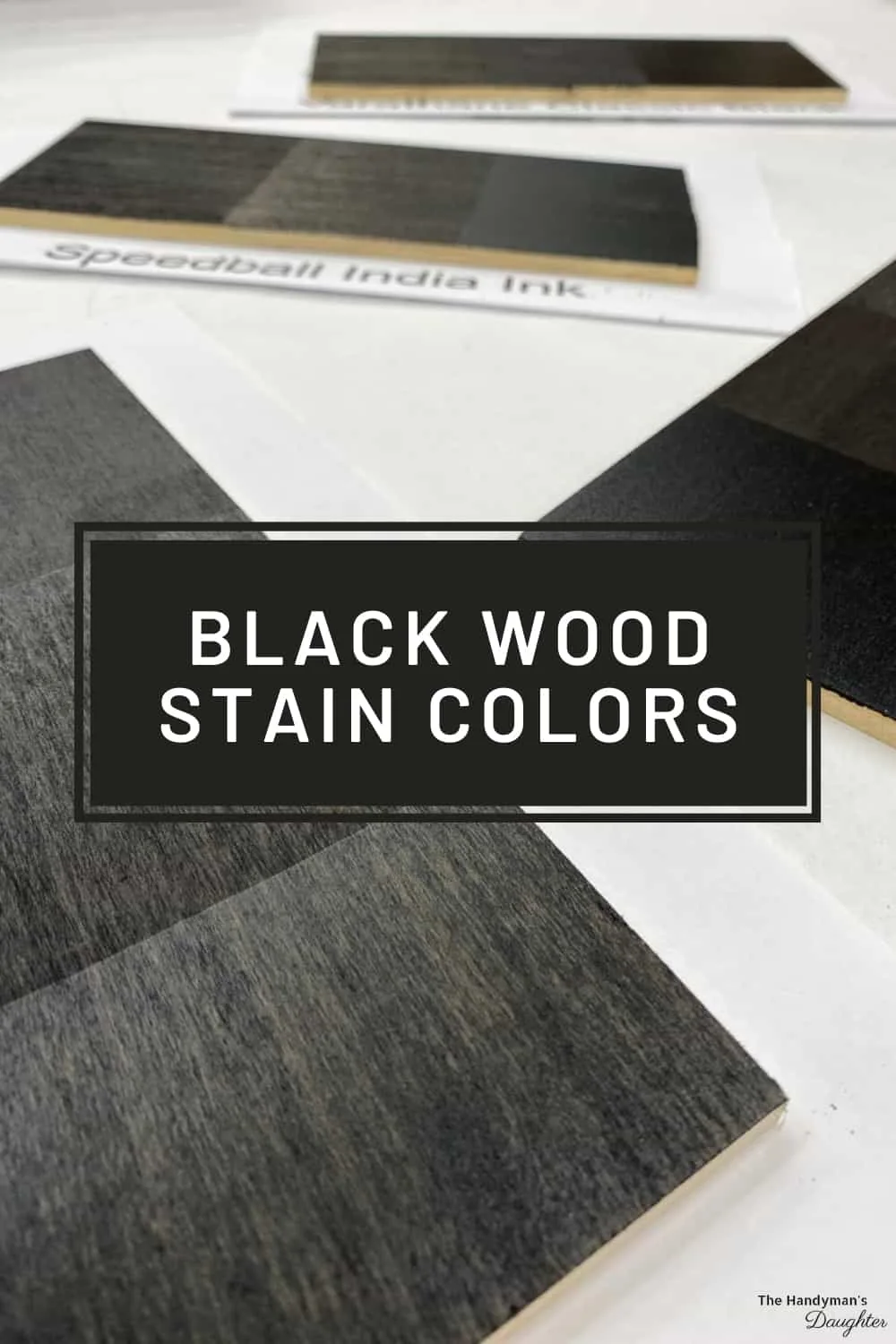
It can be hard to figure out the best black wood stain for your project just by looking at that tiny picture on the can. Stain can appear totally different depending on what type of wood you're using!
When you work for days on your project, the last thing you want to do is mess it up with the wrong color. I've experienced the panic of a finish that looks totally different than the one I pictured in my head, and I try to avoid any surprises with a few test pieces first.
This post contains affiliate links for your convenience. Purchases made through these links may earn me a small commission at no additional cost to you. Please visit my disclosures page for more information.
In my comparison of six grey wood stain colors, the hue changed considerably depending on what species of wood was used. Some skewed more towards blue, while others looked more green, depending on the undertones.
Turns out, it's hard to transform any warm wood color into a cool color! Even my favorite grey wood stain only looks truly grey in light tones like maple. I wanted to see if the same effect occurred with black wood stain.
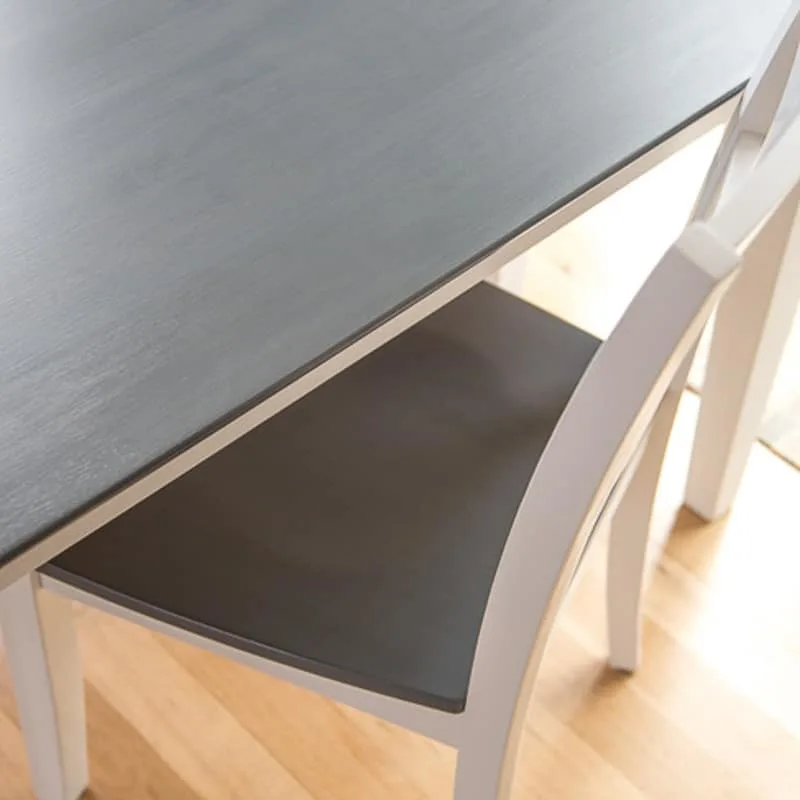
Why choose black wood stain over paint?
- Black stain allows the natural wood grain to show through.
- Black stain soaks into the wood rather than sitting on the surface like paint, which means it:
- Holds its color even when scratched, and
- Doesn't become thick and heavy with multiple coats.
- Black paint, especially with a higher gloss sheen, can look plastic and artificial.
- Black paint usually requires two or more coats to get full coverage, with hours of drying time in between each coat.
- Depending on the protective top coat you're using, you could finish your staining project in a day!
- Brush strokes and drips are less apparent with stain versus paint.
Black wood stains to be tested
For this test, I'm comparing Minwax True Black, Varathane Classic Black, General Finishes Black Gel Stain and Speedball Super Black India ink. The last one isn't exactly a wood stain, but I tried it out on my DIY rustic end table legs and it worked great!
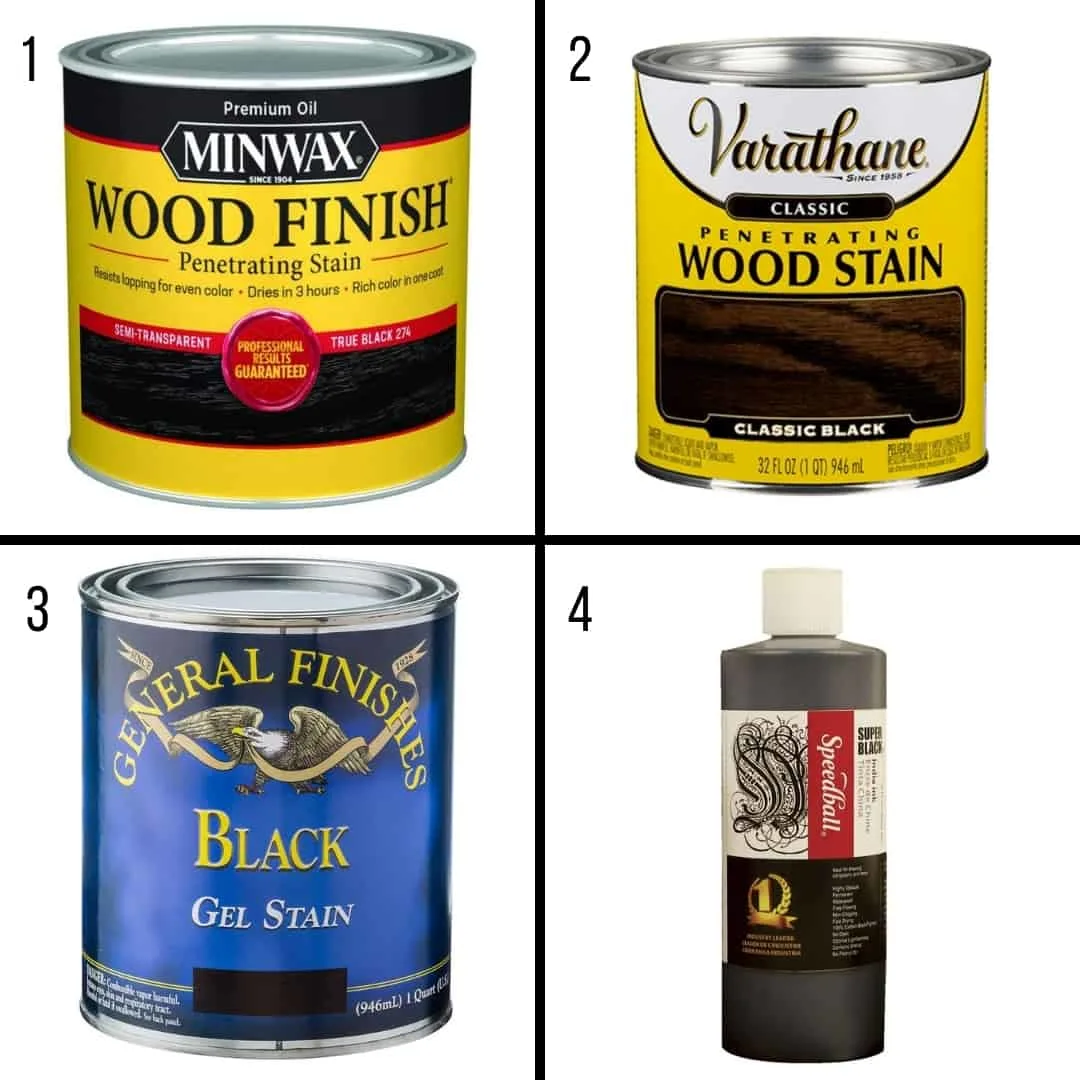
The first two are oil based, and the General Finishes one is a gel stain. You can learn more about the difference between gel stain and oil stain in this article.
I avoided any stain color called Ebony, which could contain hints of dark brown that would skew the results. Some brands have more than one formulation with the same color, so I chose the most commonly used version from each brand.
Methodology
All the black wood stain colors were tested on birch plywood, maple, poplar, pine, and red oak. Each type came from the same board to avoid any differences in color. They were sanded up to 150 grit sandpaper, and were not treated with any kind of wood conditioner before applying the stain.
The first coat of stain was allowed to soak in for exactly two minutes, then the excess was wiped off with a shop paper towel. The first coat was allowed to dry for two hours before applying a second coat. The second coat followed the same staining and drying procedure.
A strip of painter's tape was applied after the first coat dried, to separate the first and second coat on the sample. The tape was peeled off the next day before the top coat was applied.
The clear protective top coat was applied the next morning, and dried for another two hours. I used Minwax Polycrylic with a satin finish for the top coat on all the samples, because it dries clear and won't affect the final color. Check out this article for more information about polycrylic vs polyurethane, and which one to choose for your project.
Each sample has been photographed in the same lighting conditions and camera settings against a white background without any color correction other than adjusting the white balance to the white paper.
Let's see how these samples turned out!
Minwax True Black Stain
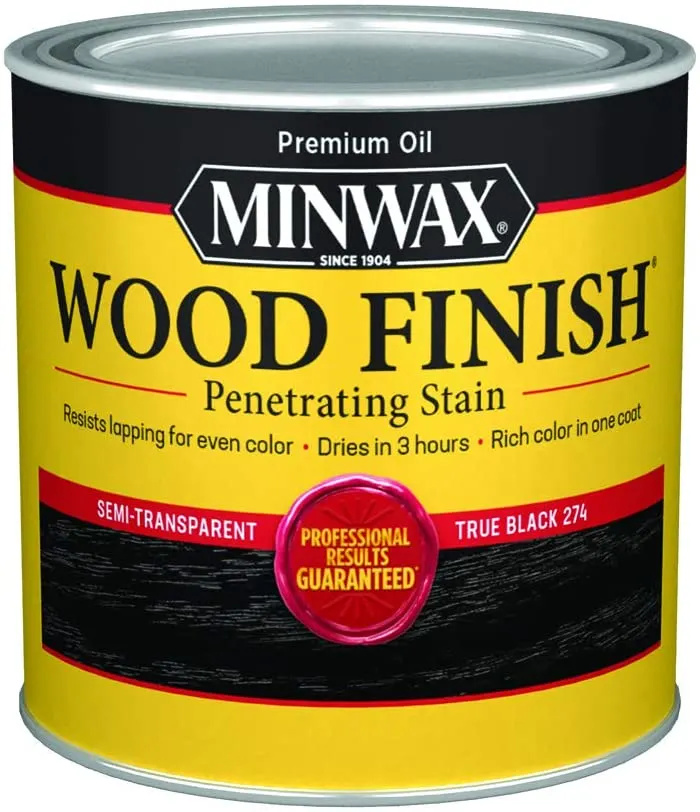
Pros
Overall, the Minwax True Black wood stain performed really well! You could probably get away with just one coat with most types of wood. A second coat seemed to make the stain slightly darker and more uniform, but it wasn't a dramatic difference. The top coat deepened the black color without obscuring the wood grain.
Cons
The only loser in this group was the red oak sample, which turned out really blotchy and somehow lost most of its stain when top coat was applied.
A lot of the stain was pulled up when the painter's tape was removed between the first and second coat. You can see that it only pulled up the stain on the prominent grain lines, which indicates that it didn't soak in as deep in those areas.
Results
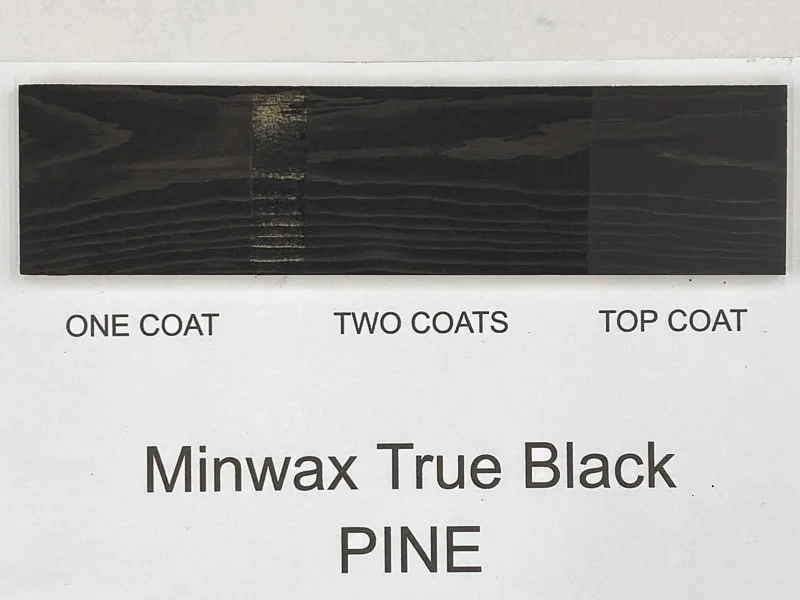
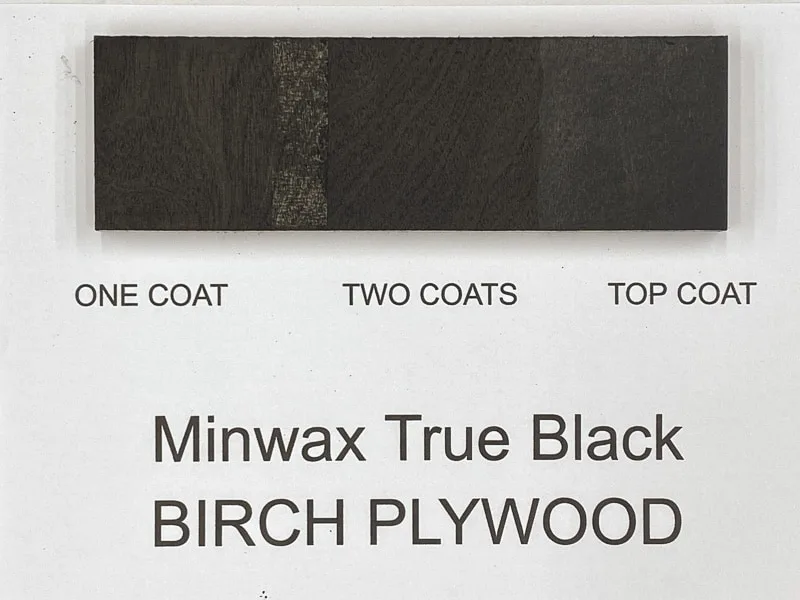
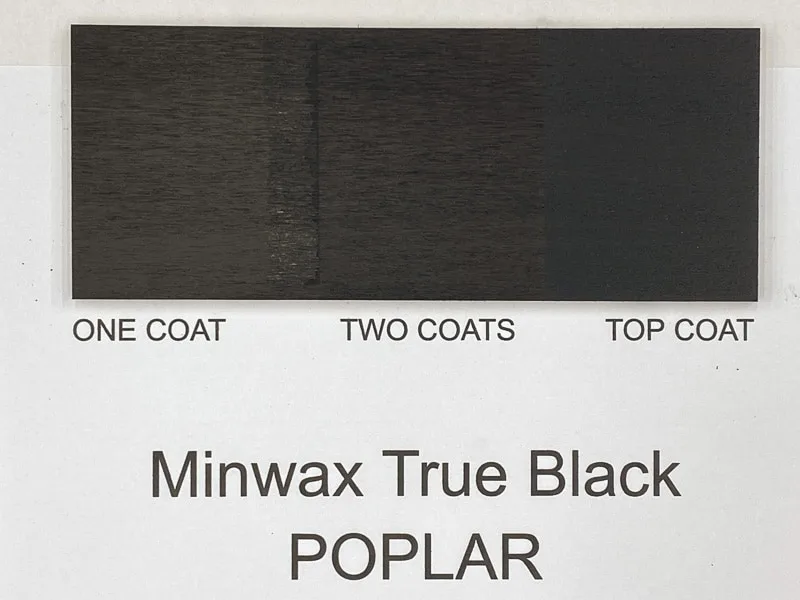
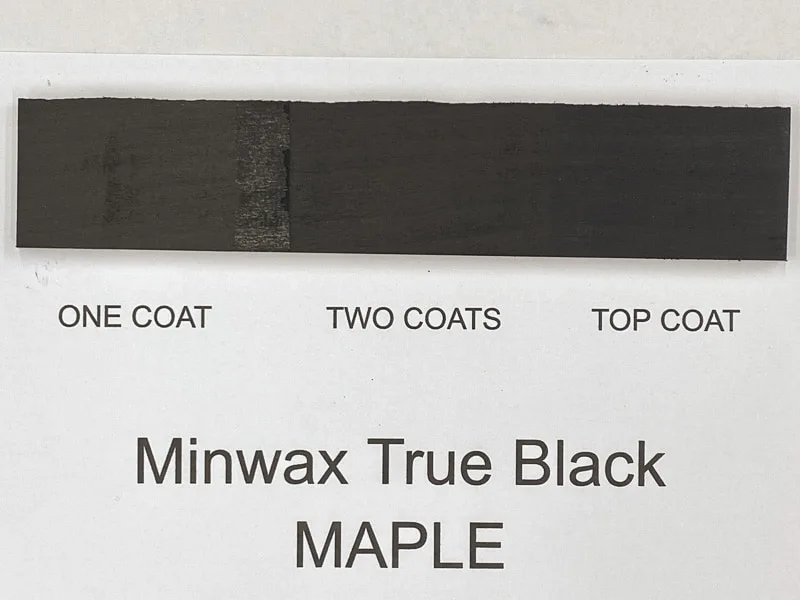
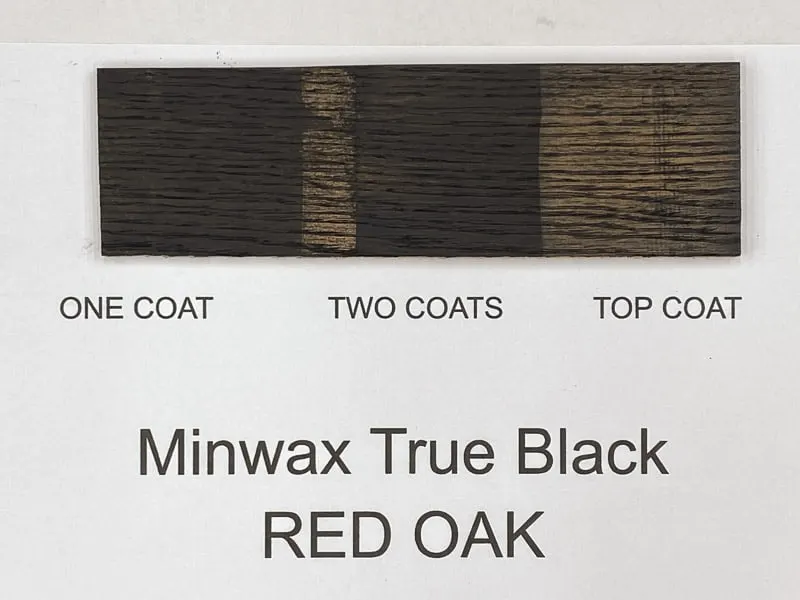
Varathane Classic Black Stain
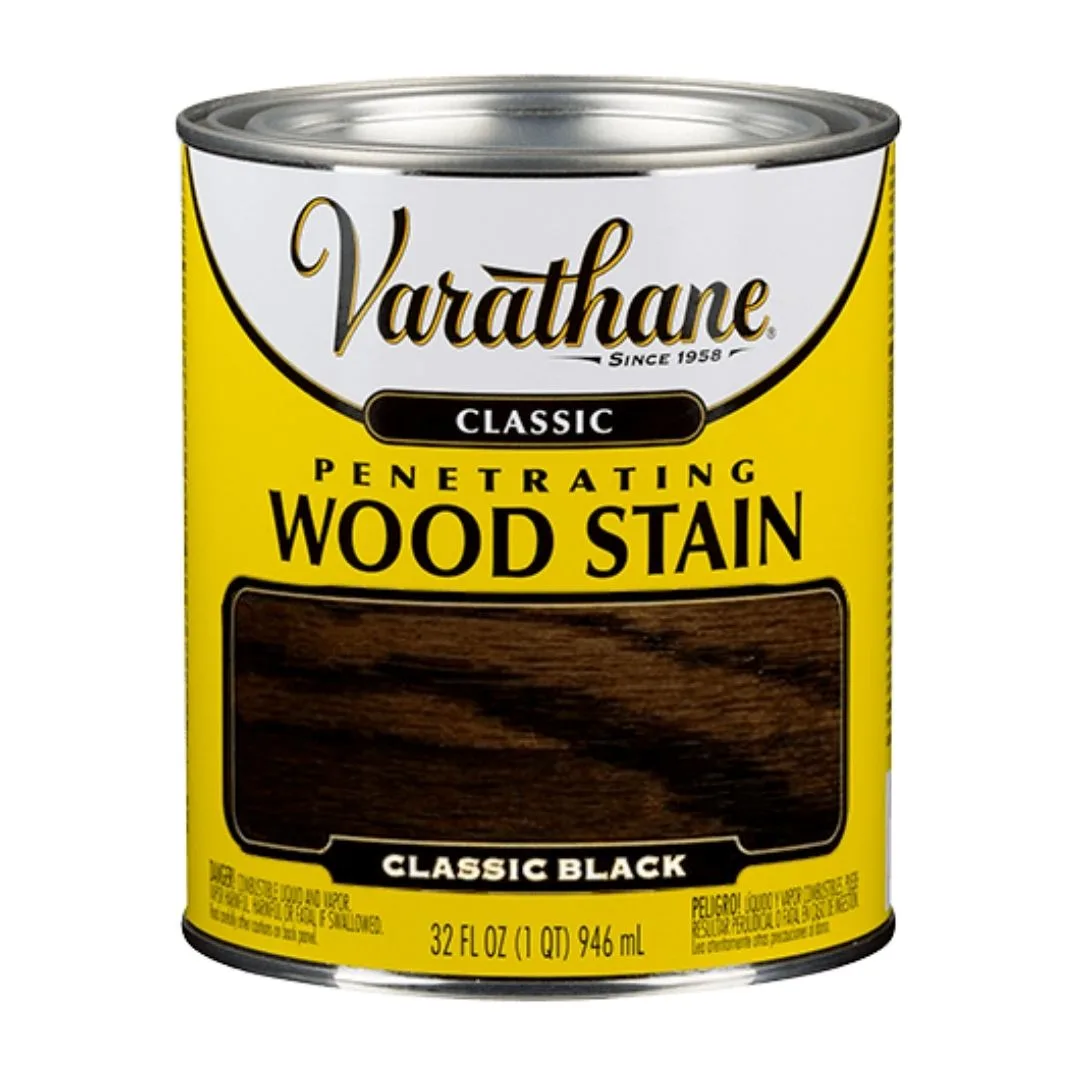
Pros
Varathane Classic Black had similar results to the Minwax samples, so you could go with either one when deciding which to buy at the store. Again, there wasn't too much of a difference between the first and second coats, so you'll save time by just applying one coat.
Cons
Overall, this was the lightest of the black wood stains, especially on the birch plywood and maple. If you're looking for a dark charcoal gray color, this might be just what you're looking for! But if you're going for true black, there are others that performed better.
The red oak did something weird again with the top coat! You'll see later on that the Polycrylic did well on red oak with the other two brands, so maybe it has to do with how deep the stain soaks into the hard wood.
Results
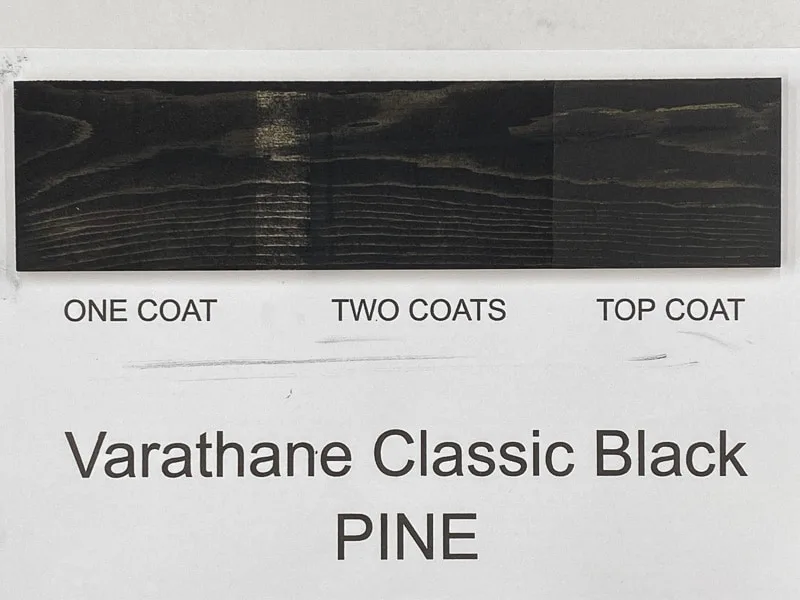
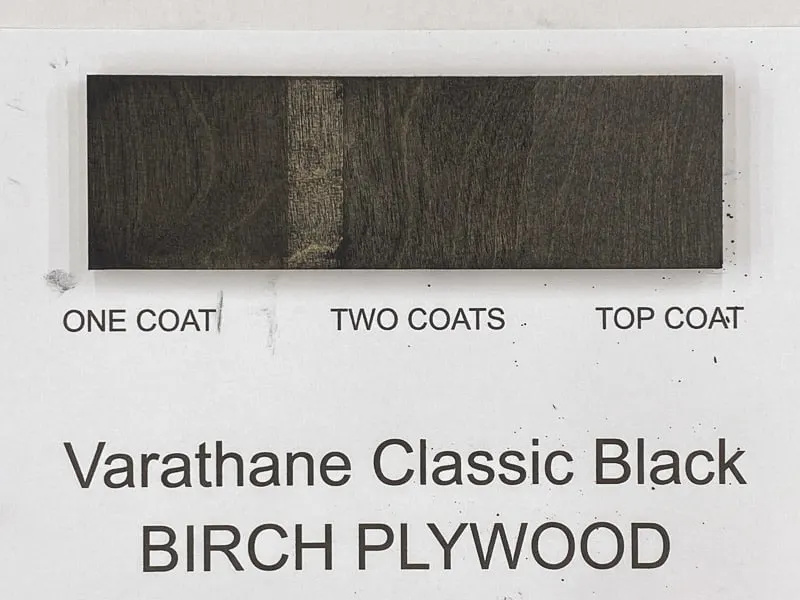
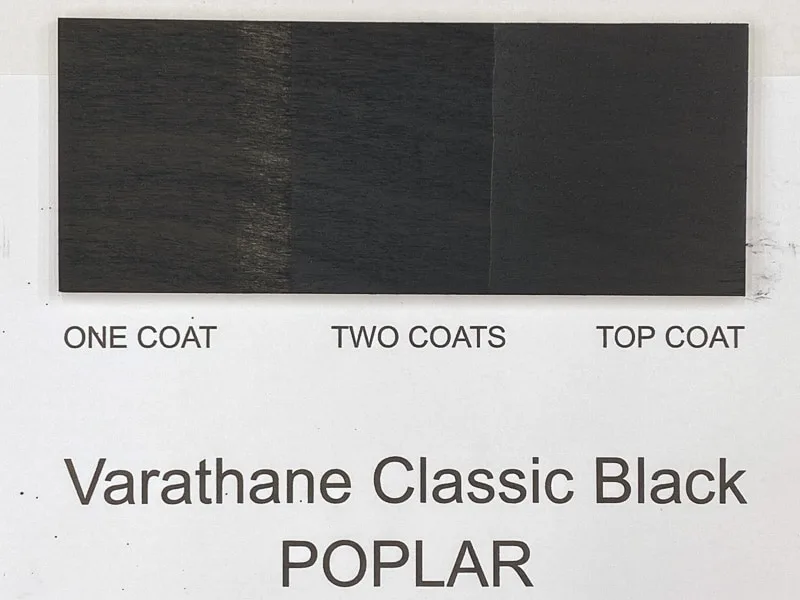
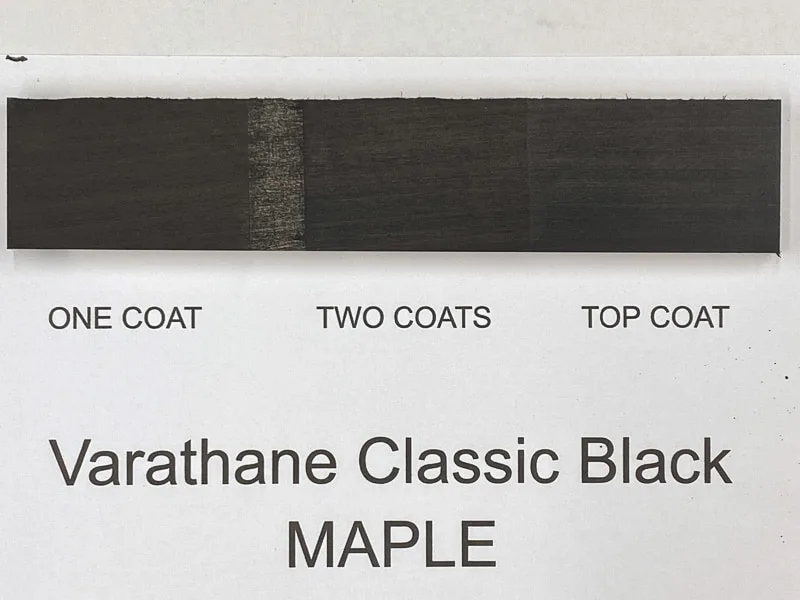
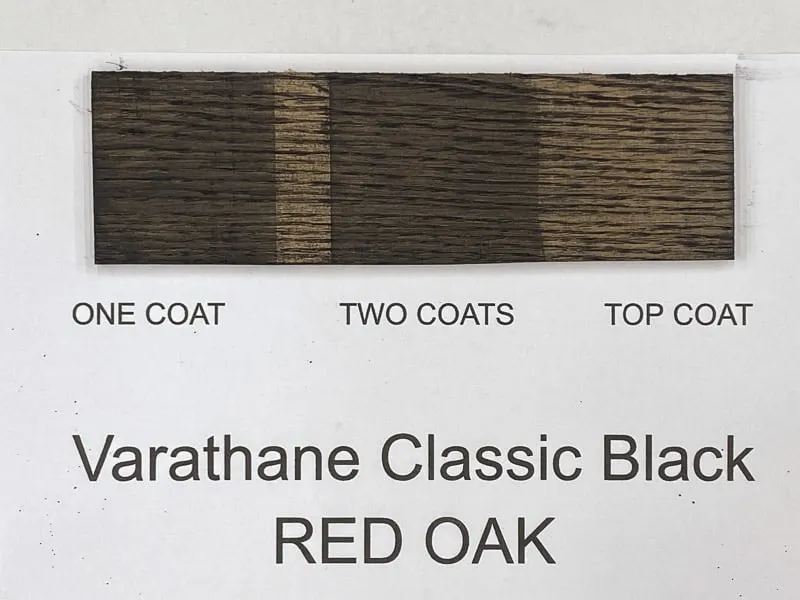
General Finishes Black Gel Stain
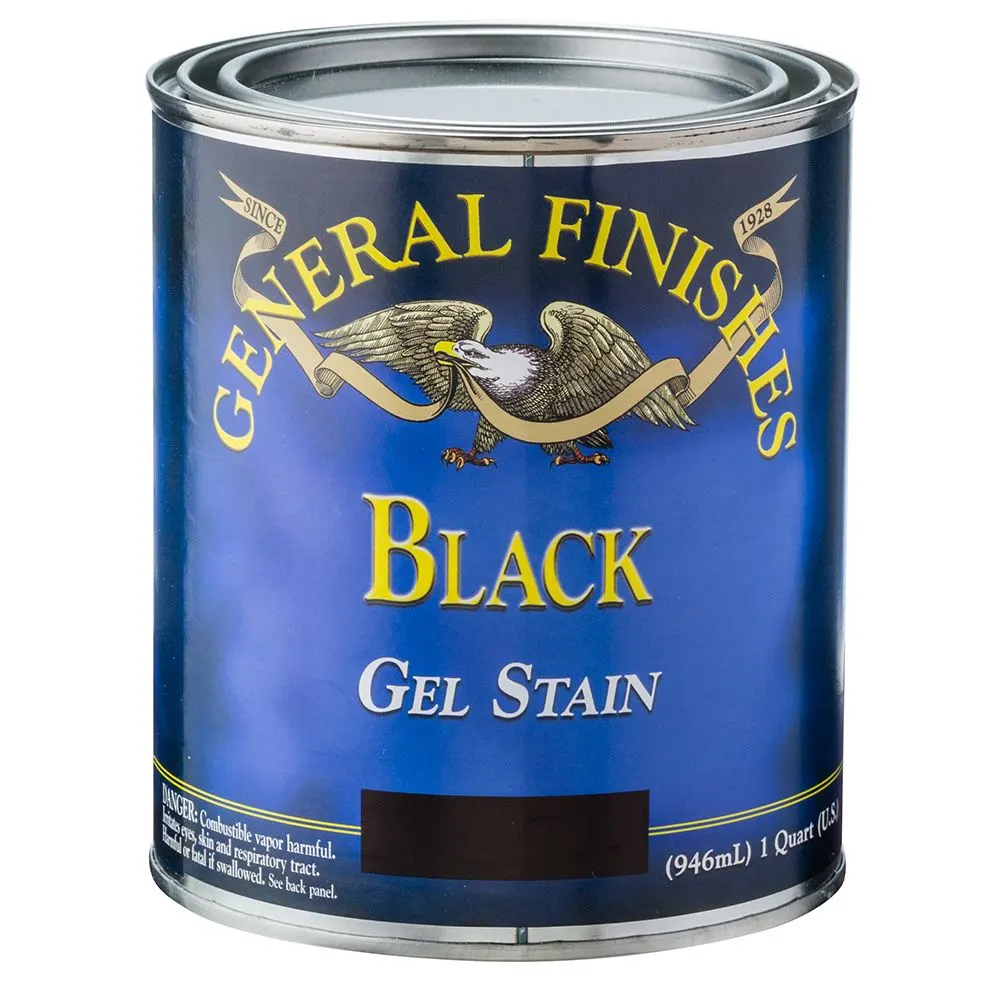
Pros
One of the benefits of gel stain is that it's really easy to work with, and the General Finishes black gel stain was no exception. It's easy to apply without drips, then wipes off easily. There isn't a noticeable strip of missing stain from the painter's tape, which tells me that the stain soaks deep into the wood and bonds to the fibers well.
Cons
I actually had to go back to my samples to double check that I had the positioning right in the photos, because somehow one coat of stain is darker than two! My theory is that the gel bonds to the stain that's on the surface of the wood from the previous coat, and pulls it away when the excess is wiped off.
Results
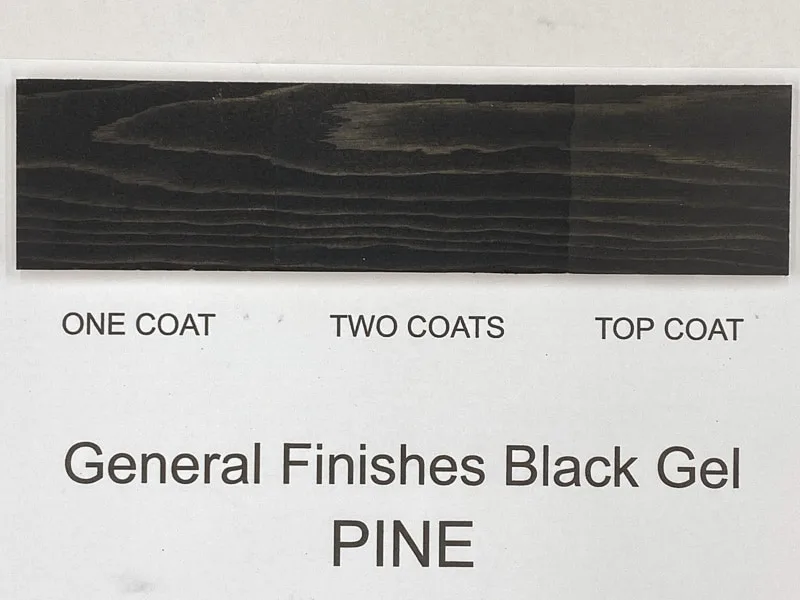
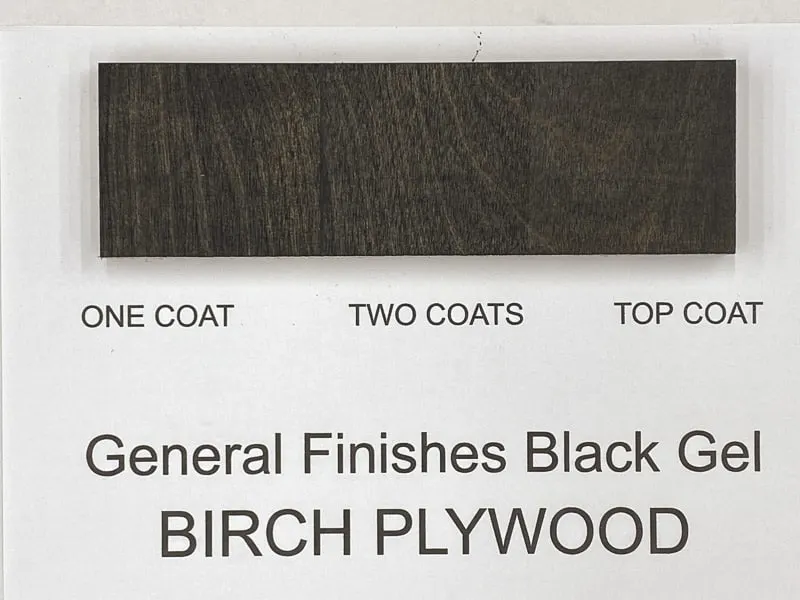
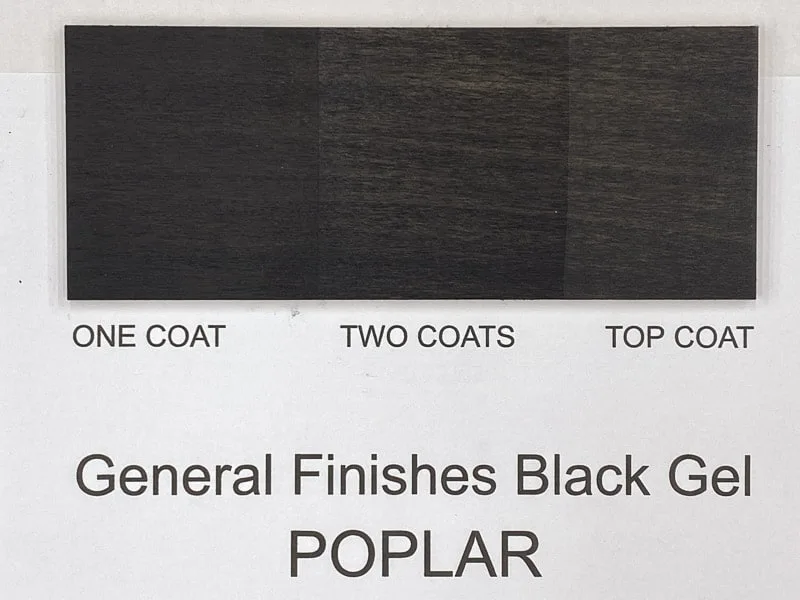
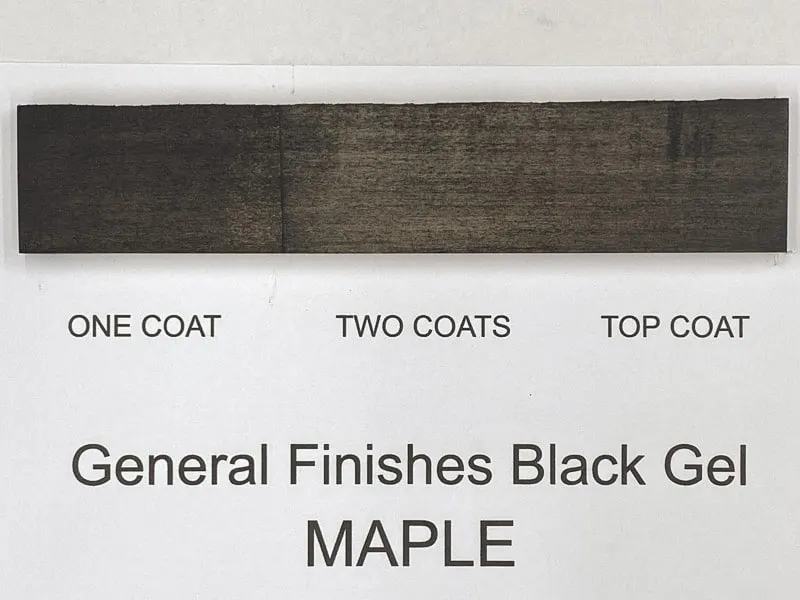
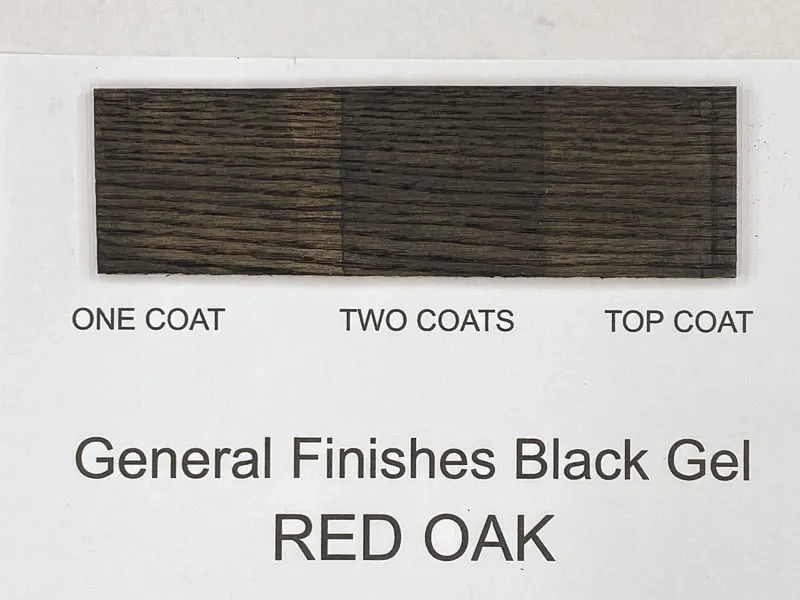
Speedball India Ink
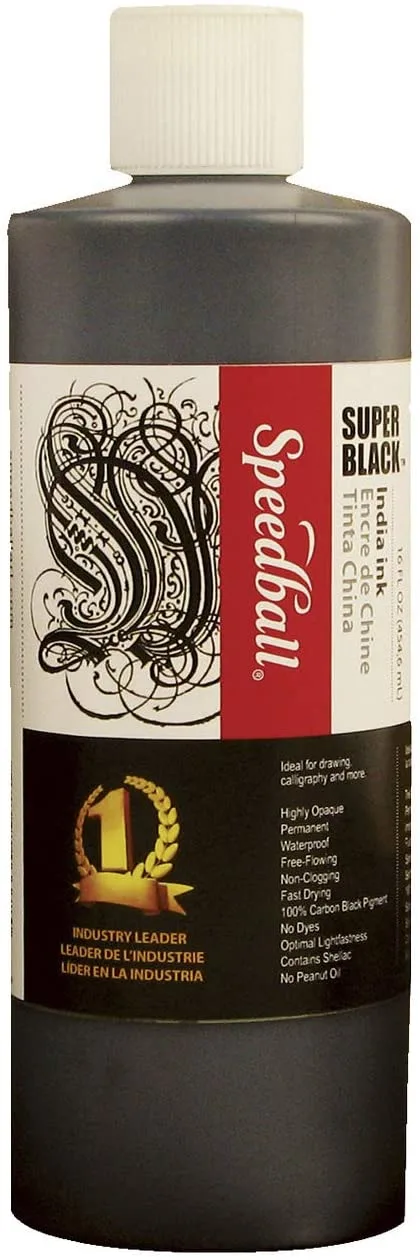
Pros
India ink had the most consistent color over all the different wood species. It produced the blackest black, no matter what the underlying wood is. Two coats made a little bit of a difference, and helps to ensure that you get the same color throughout the board.
It also passed the painter's tape test. There's a crisp line between the two coats, and nothing pulled off when the tape was removed. This particular India ink is waterproof, so you might be able to get away without a top coat if it's a piece that won't get any wear and tear.
Cons
India Ink was the messiest to work with (probably because it's meant for calligraphy, not wood stain!) It dried really fast, so it's harder to wipe off the excess. You can see on the poplar and maple samples that there was a little too much on the second coat that couldn't be removed, which resulted in a shiny spot.
Results
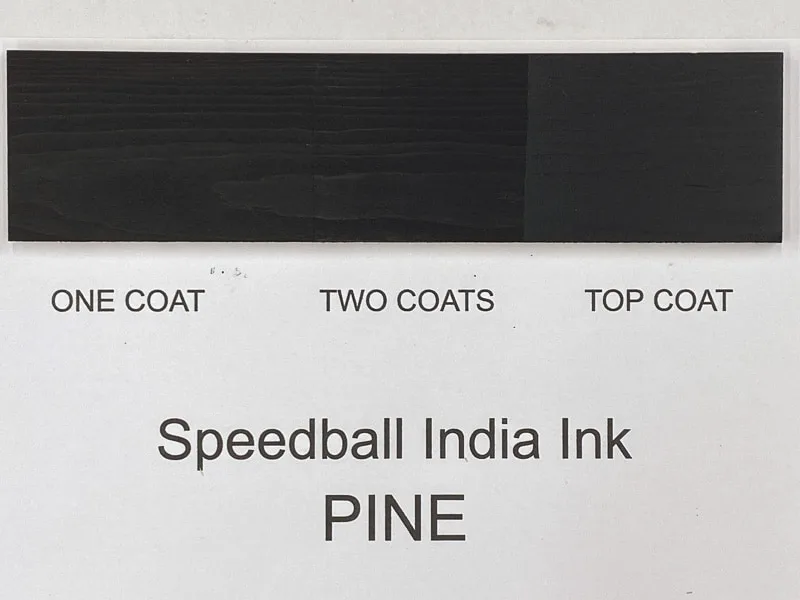
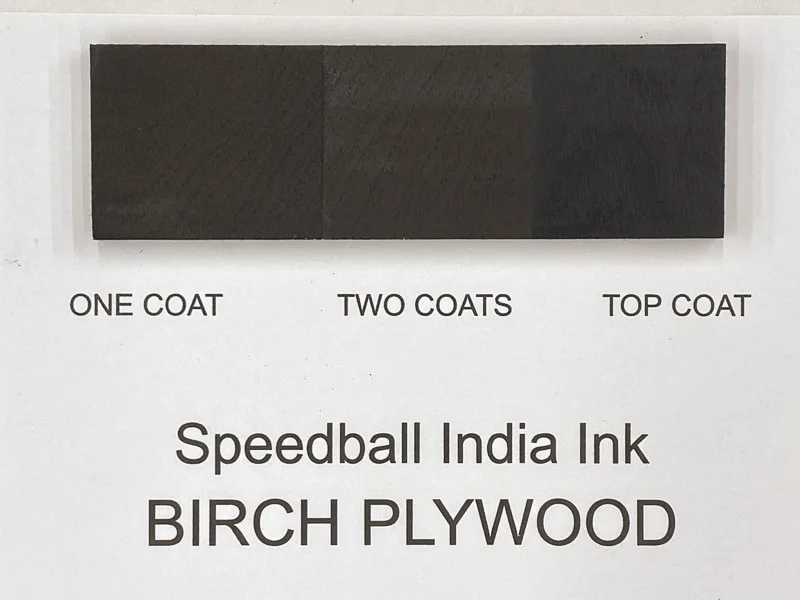
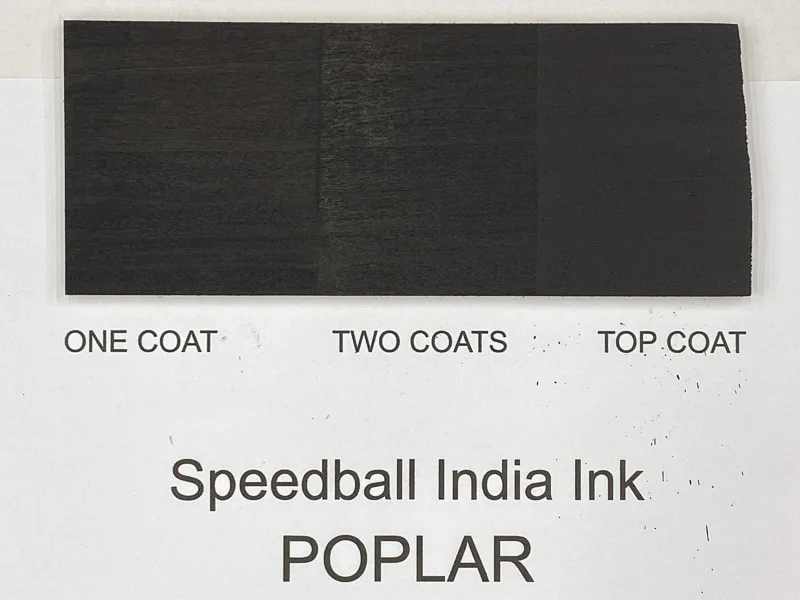
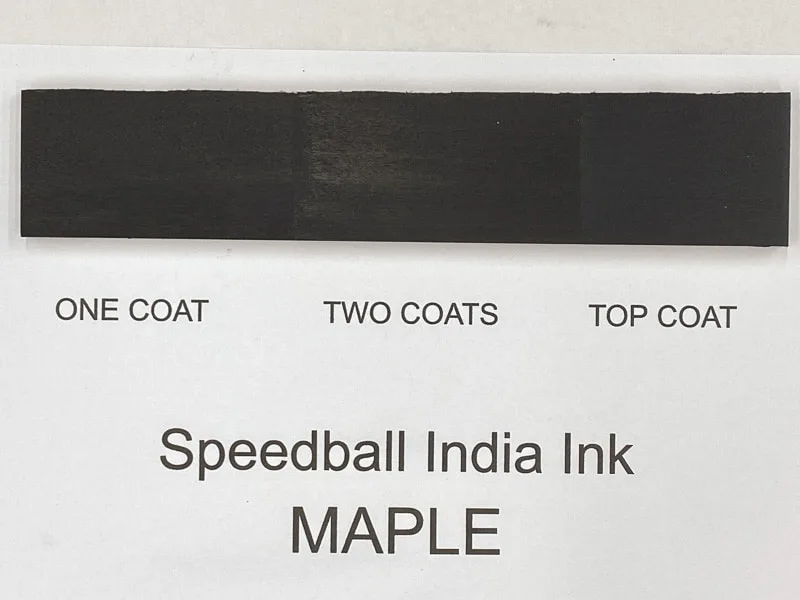
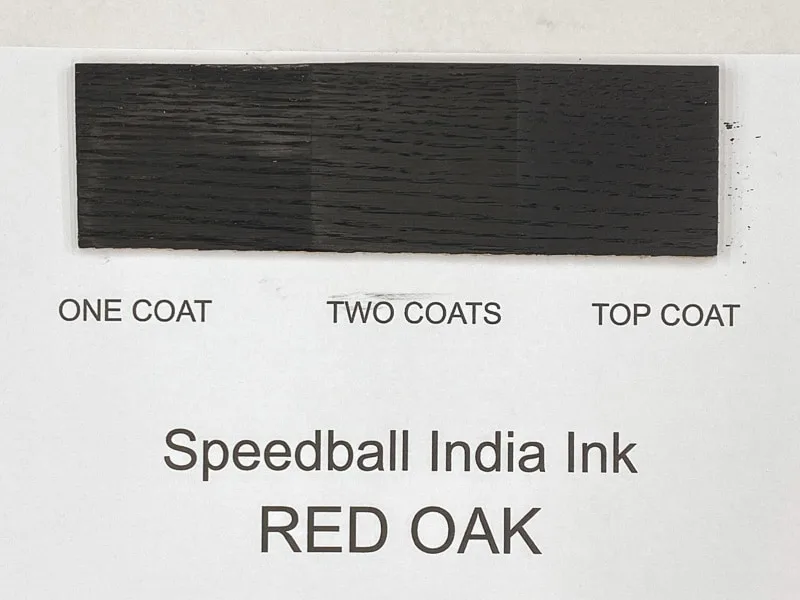
Black stain comparison by wood species
I always find it helpful to compare the different stains on a single wood species right next to each other, to see how they change with each brand. Hopefully this will help you make a decision!
Black wood stain samples on pine
On pine, Varathane Classic Black had the most contrast and distinct grain lines. India Ink was definitely the blackest black, with just a hint of grain pattern. Minwax True Black is a happy medium between visible grain pattern and black color.
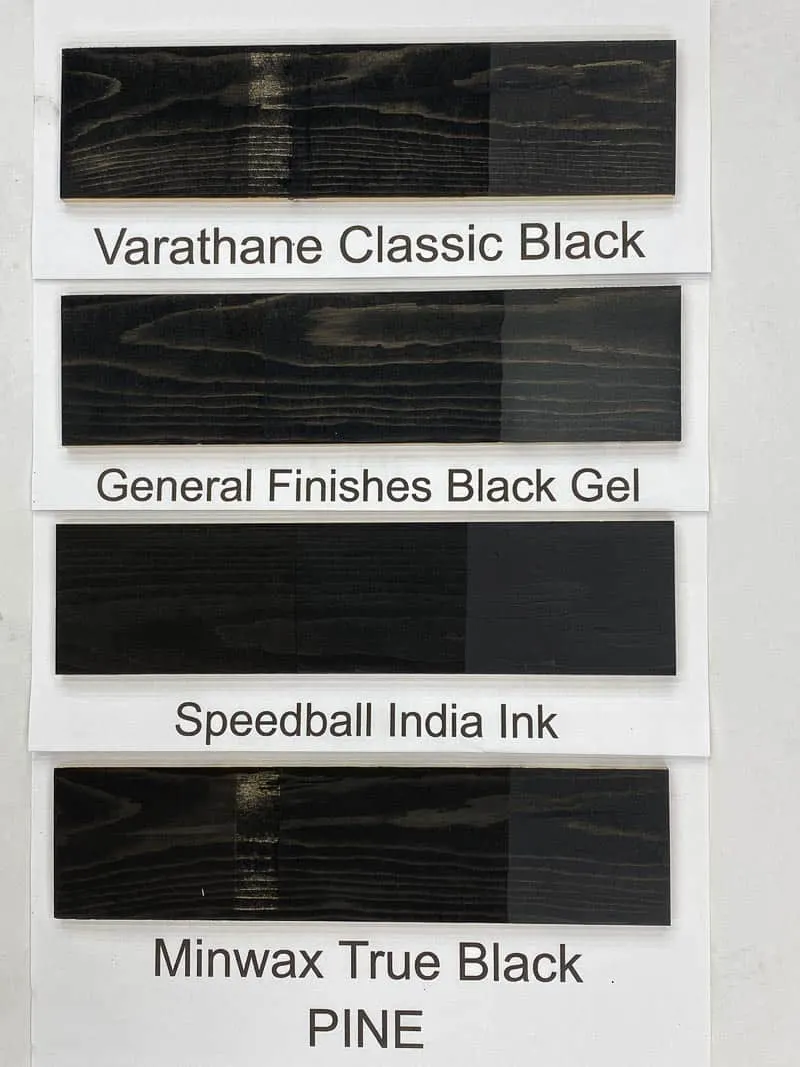
Black wood stain samples on birch plywood
Birch plywood is notorious for a blotchy stain finish, but these samples all seem to have pretty even coverage. India ink and Minwax are both so dark, you can barely see the grain at all. Varathane and General Finishes both show a nice grain pattern without too much contrast.
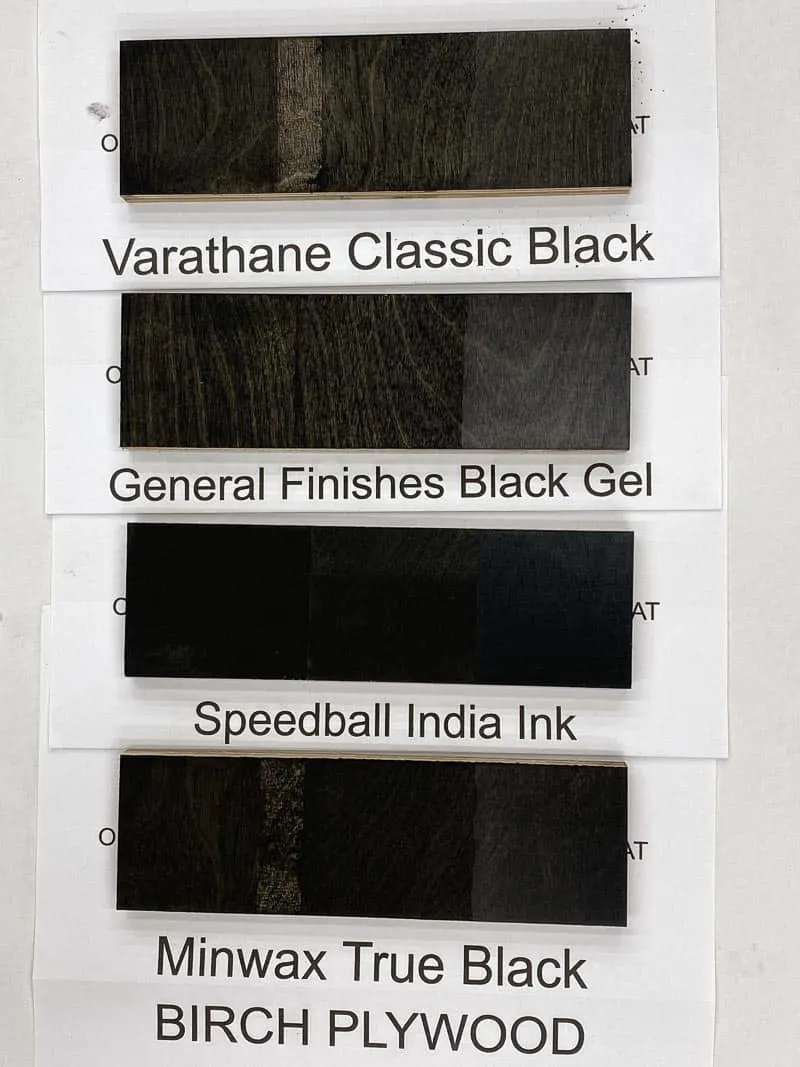
Black wood stain samples on poplar
I was really surprised by how dark and even all the poplar wood samples turned out! I love poplar for painted furniture builds, since it has tight grain that takes paint well. Apparently the same applies to black wood stain! You really can't go wrong with any of these colors.
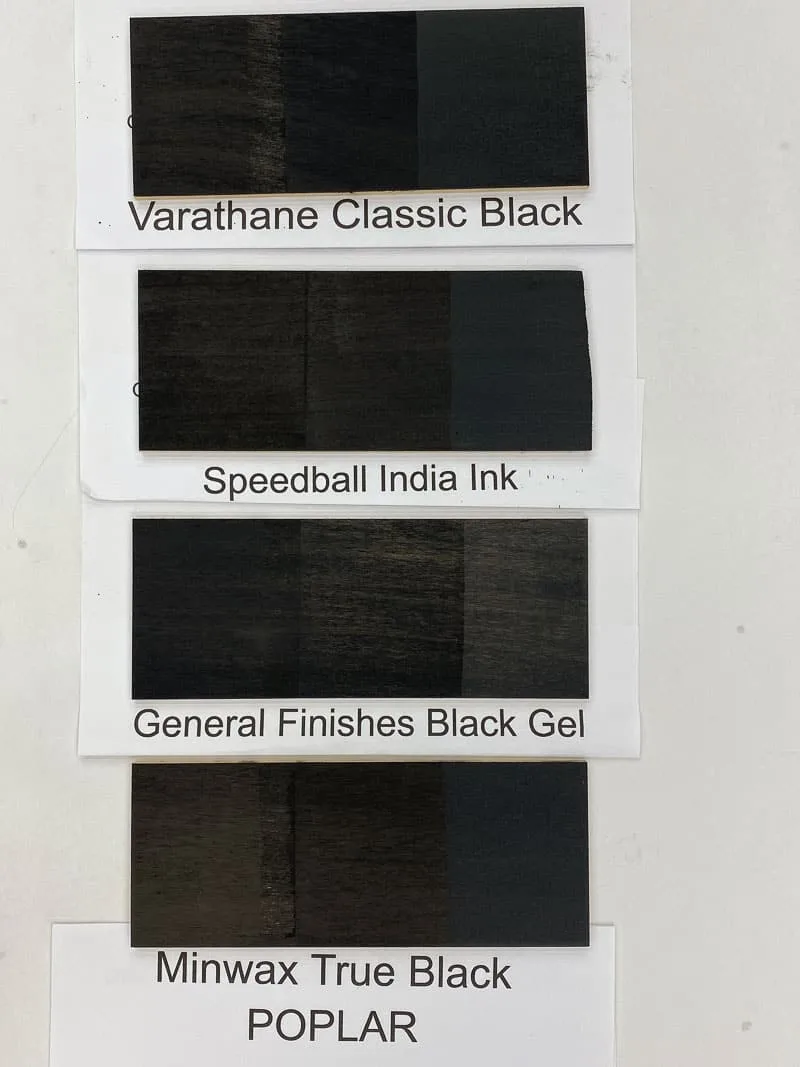
Black wood stain samples on maple
Honestly, I don't think I would ever choose to stain maple black! General Finishes gray gel stain on maple is one of my favorite combos, and I'm surprised at how disappointing the black version turned out.
If I had to choose, I think I'd pick the Varathane stain because it allows some of the grain to show through with even coverage throughout.
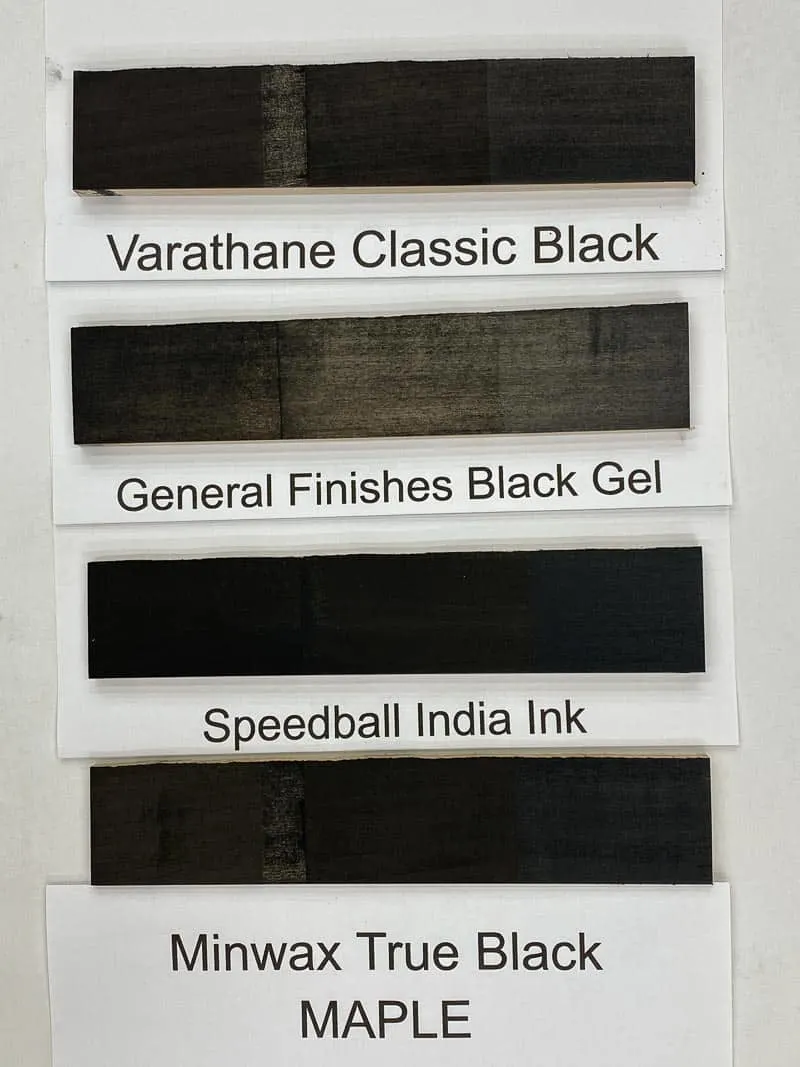
Black wood stain samples on red oak
Red oak is a tricky wood to stain, especially black! The India ink was the only good result in this bunch. If you're thinking of staining your oak kitchen cabinets, that's the one I'd choose!
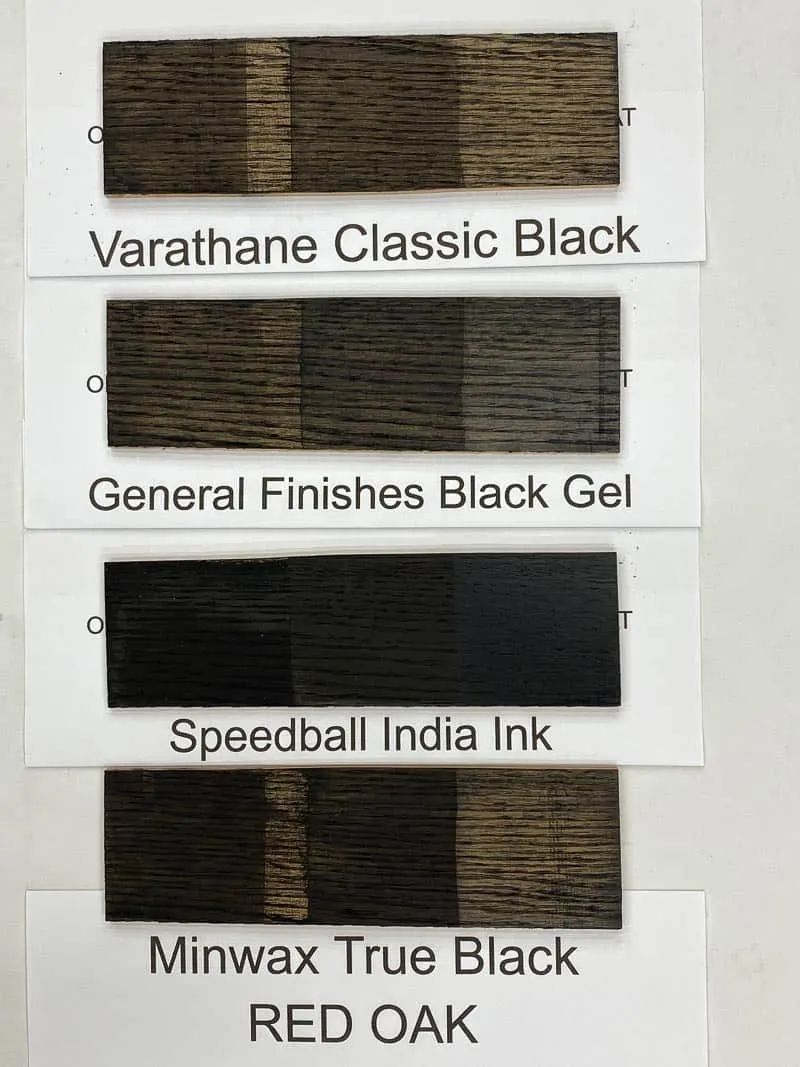
So, which one is your favorite? I'd love to hear your opinion down in the comments below! Hopefully this helps you make a decision on which black wood stain to choose for your next project!
Check out these other wood stain articles!

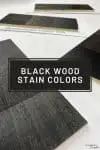
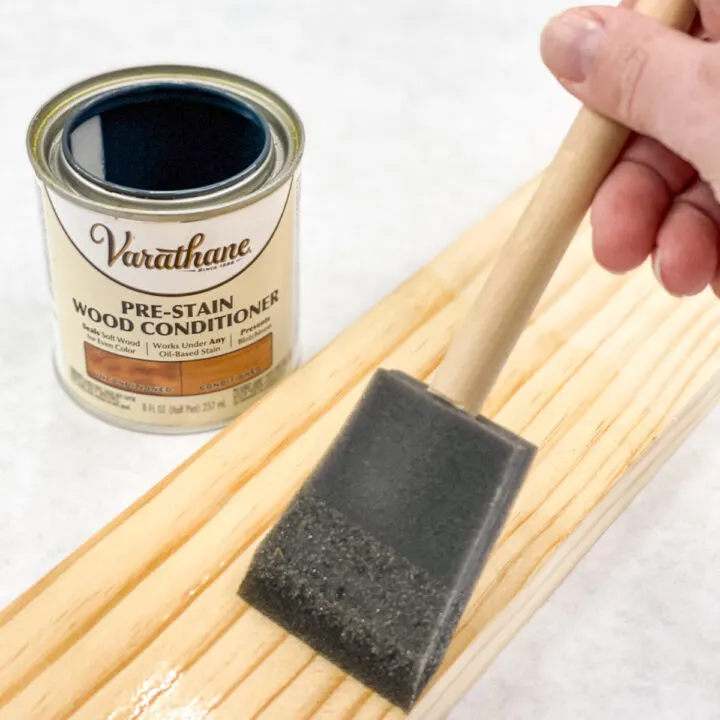
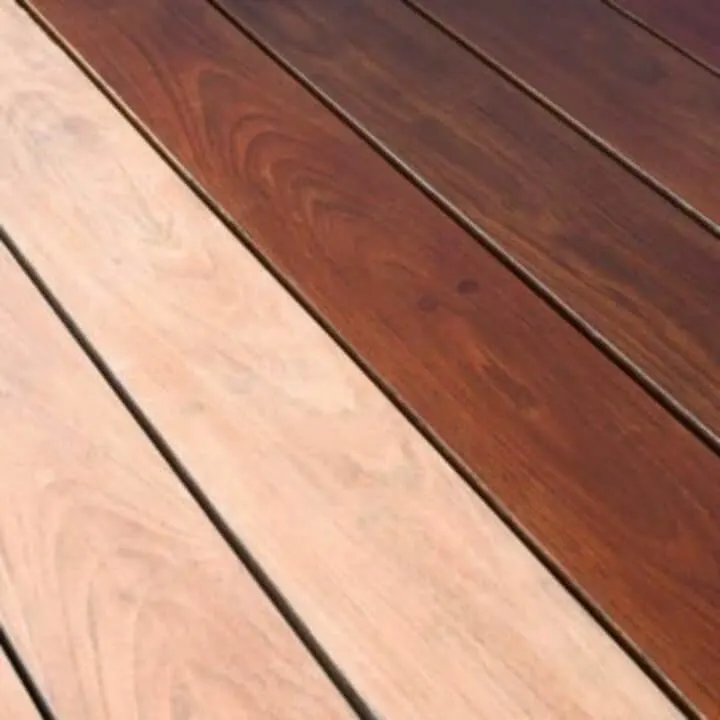

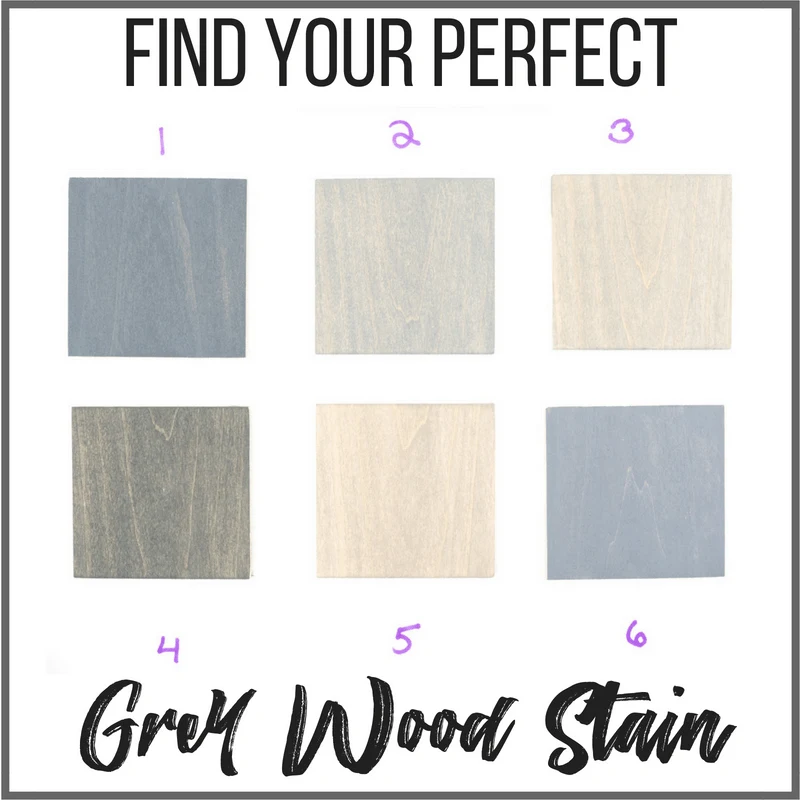

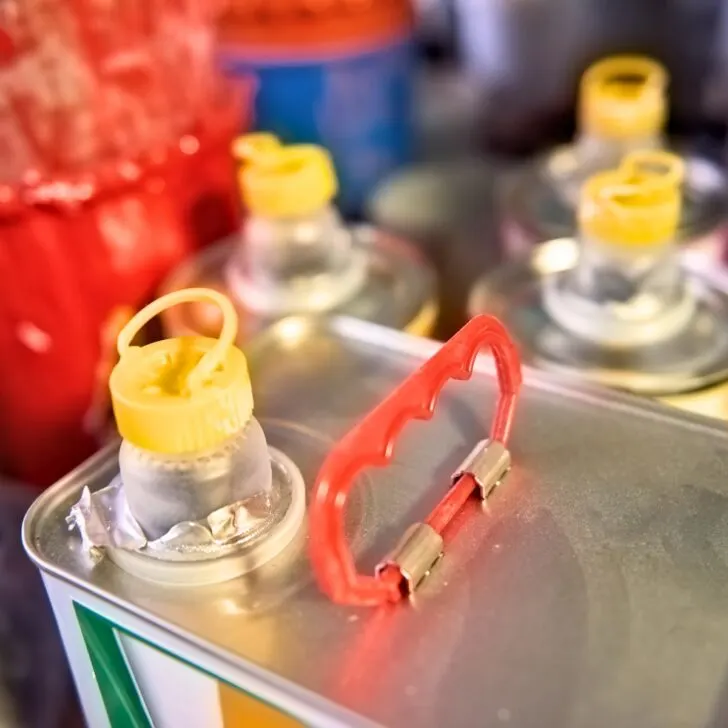
Matt
Monday 3rd of May 2021
Very helpful, thank you for doing this!
Jane Heslinga
Thursday 18th of March 2021
What a wonderful comparison study! I am staining a maple apothecary stand. Leaning towards India Ink. THANK YOU 🙂
Tricia Fields
Monday 15th of March 2021
This was so helpful - thank you for sharing! I was on the fence about using Minwax because I wasn't sure if it would be black enough, but your post convinced me.
scott brown
Sunday 14th of February 2021
thanks so much for this awesome side by side comparo analysis!...im in the process of researching procedures to refinish a drum set--peel off the white wrapping & stain/varnish the shells...sure looks like the india ink gives the deepest black color at maybe the sacrifice of some grain reveal...do you think a slightly diluted ink might show a little more grain?...if so what would you use to dilute the ink?...thanks again!
Vineta
Tuesday 16th of February 2021
Oooh, that sounds like a fun project! You can definitely still see the grain with all the black stains, especially when you look at the wood from an angle. I would test out diluting the India ink in varying amounts of water until you get the look you want. Try it on a piece of wood that's the same material as the drum, or on the inside where you won't see it. Another way to show the grain better would be to lightly sand the wood after the ink has dried. Good luck!
Trekker
Tuesday 2nd of February 2021
Well done! Just what I was looking for! I'm a lifelong woodworker/chemist but have no experience with black stain, and your website answered all my questions. Congratulations on a well designed scientific-type of experiment that was well documented and easy to understand. Much better than most of the one-off anecdotes posted by users. Allows one to draw their own conclusions about the result one is trying to achieve. I selected the General Finishes stain for my red oak project. Looking forward to the results when stain arrives.